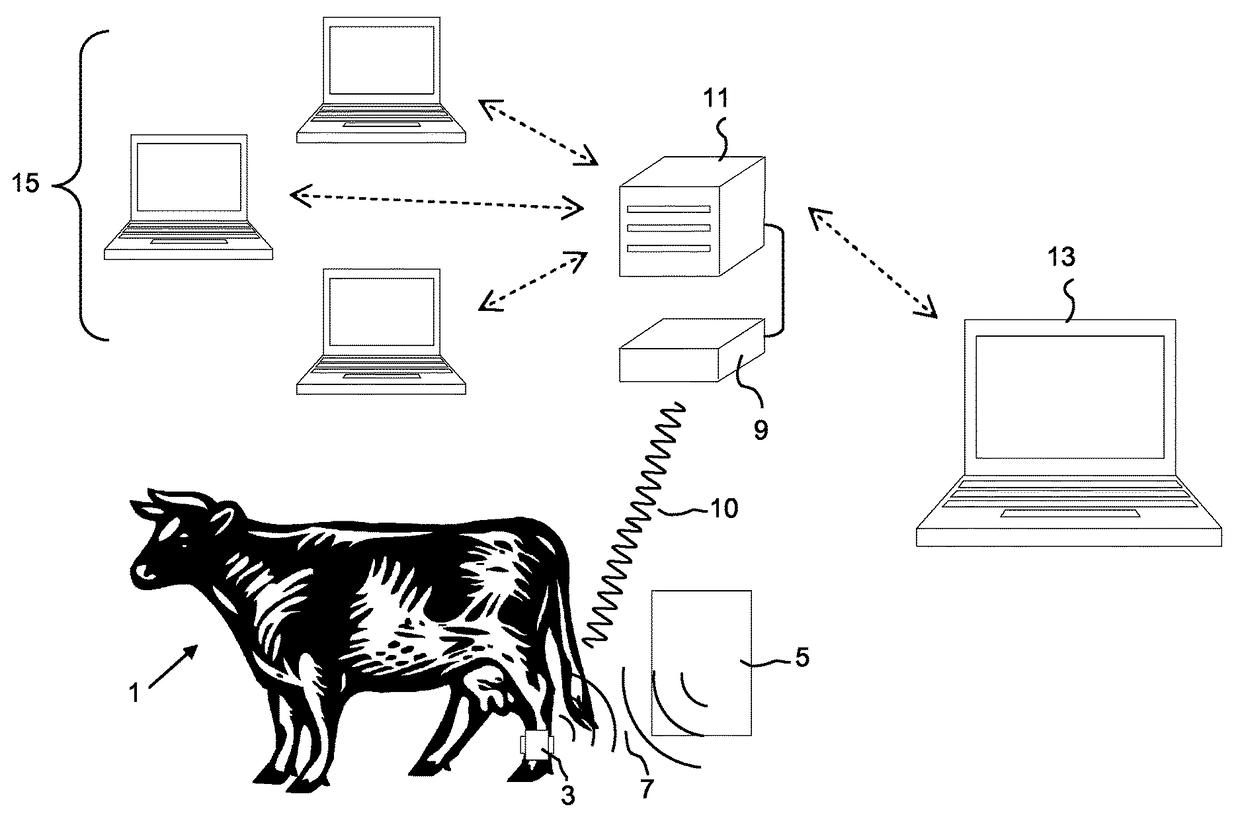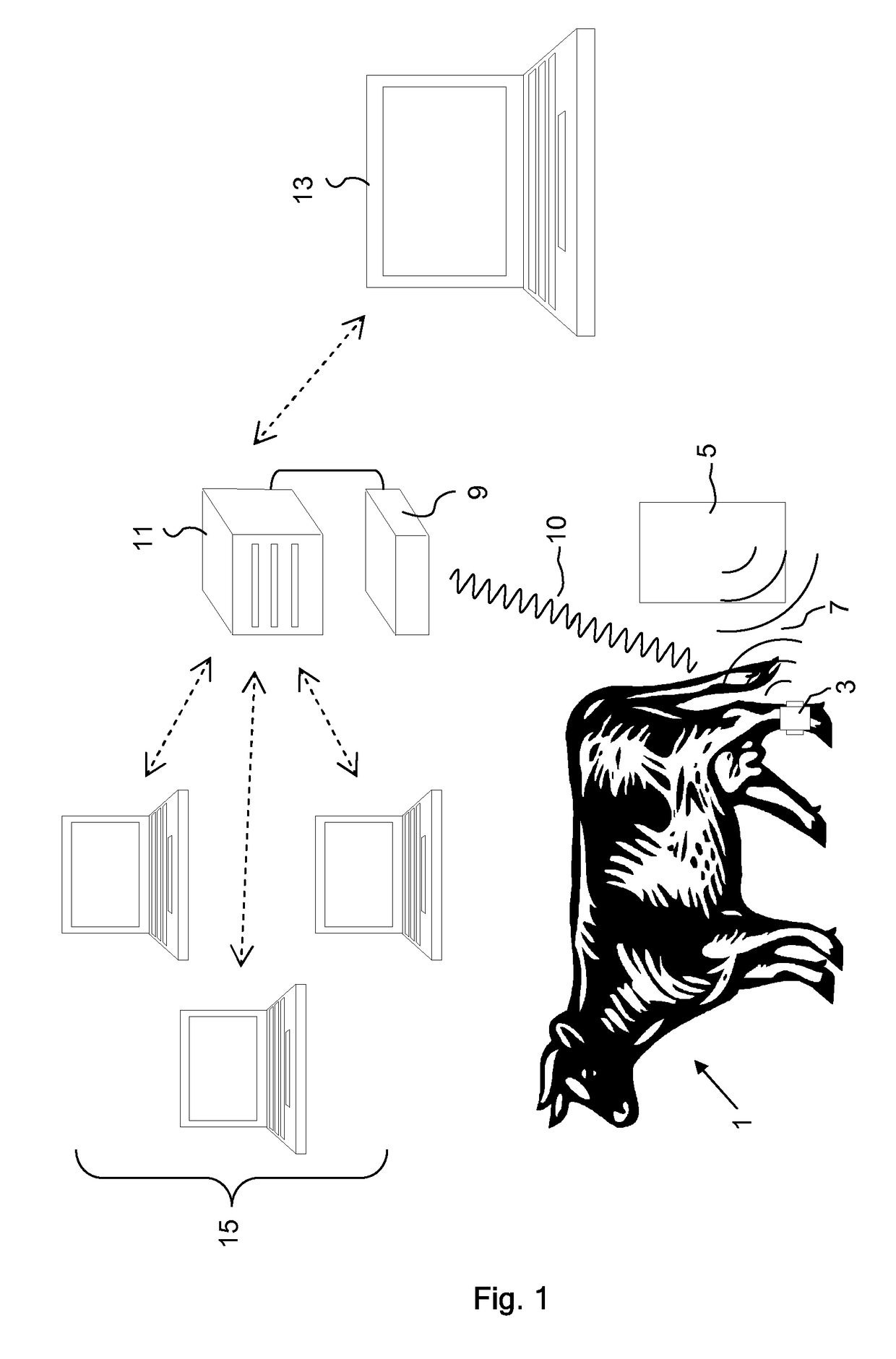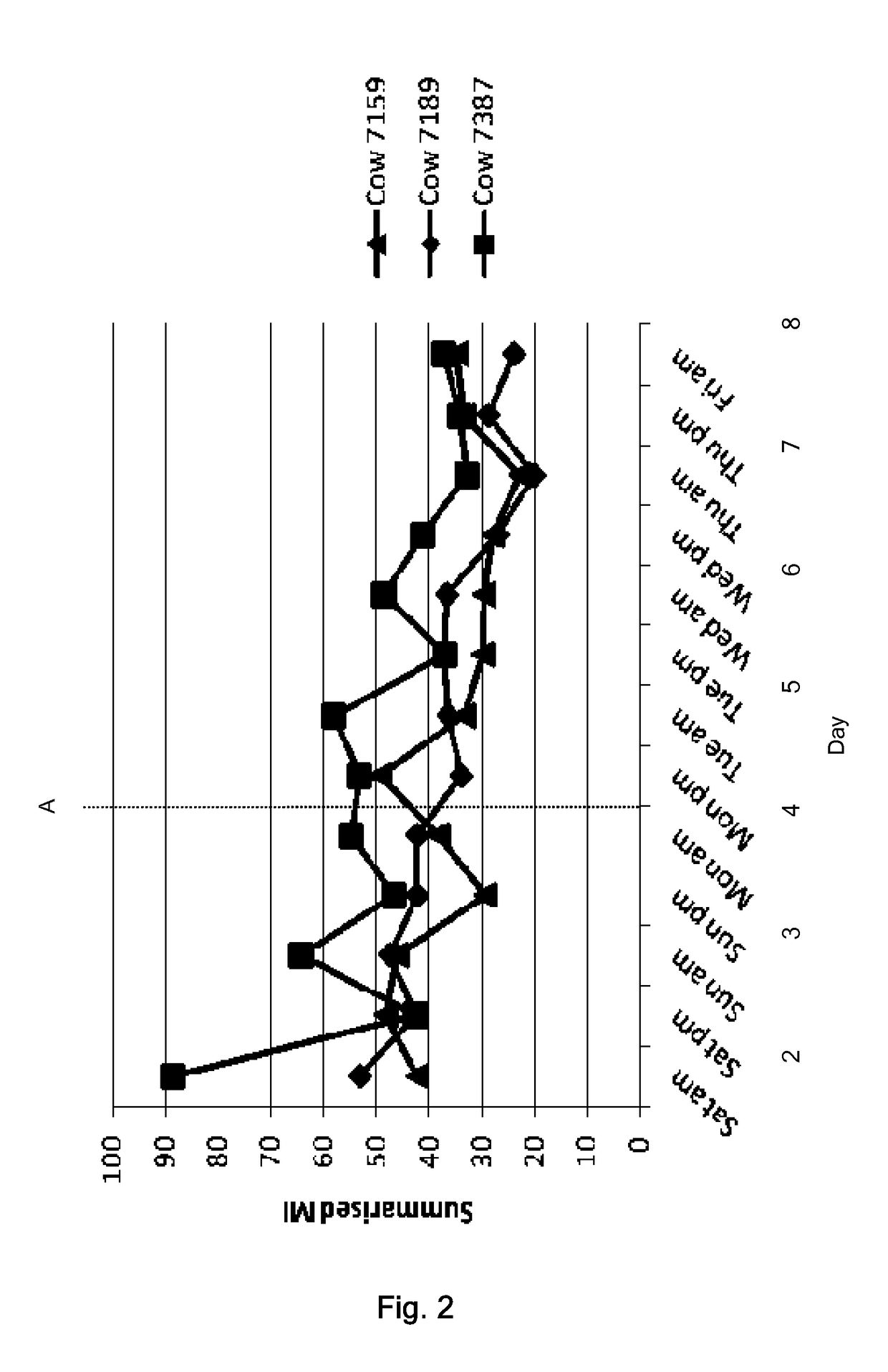Apparatus and method for detecting disease in dairy animals
a technology for detecting disease and dairy animals, applied in the field of disease detection, can solve the problems of significantly affecting the output of the herd as a whole, mastitis alone costing uk dairy farms more than, and milk of lower quality and/or quantity, and achieve the effect of greater specificity and greater sensitivity
- Summary
- Abstract
- Description
- Claims
- Application Information
AI Technical Summary
Benefits of technology
Problems solved by technology
Method used
Image
Examples
Embodiment Construction
[0068]An example of apparatus according to the invention is shown schematically in FIG. 1. A cow 1 is provided with a sensor unit 3, strapped to a hind leg. The sensor unit comprises a low power, low radio frequency transceiver, and a high power, high radio frequency transmitter, a three axis accelerometer (functioning as a motion sensor), a motion data storage unit and a battery.
[0069]The sensor unit is operable to store motion data measured by the accelerometer in use and to transmit it to a central receiver 9. In an example embodiment, the sensor unit is operable between a dormant mode, wherein the transceiver, accelerometer and motion data storage unit is functional, and a higher power active mode, wherein the accelerometer, motion data storage unit and the transmitter are functional. When brought into the proximity of a tablet reader 5 (typically positioned at an entrance to a milking parlour) the sensor unit communicates with the tablet reader via low power, low radio frequenc...
PUM
 Login to View More
Login to View More Abstract
Description
Claims
Application Information
 Login to View More
Login to View More - R&D
- Intellectual Property
- Life Sciences
- Materials
- Tech Scout
- Unparalleled Data Quality
- Higher Quality Content
- 60% Fewer Hallucinations
Browse by: Latest US Patents, China's latest patents, Technical Efficacy Thesaurus, Application Domain, Technology Topic, Popular Technical Reports.
© 2025 PatSnap. All rights reserved.Legal|Privacy policy|Modern Slavery Act Transparency Statement|Sitemap|About US| Contact US: help@patsnap.com



